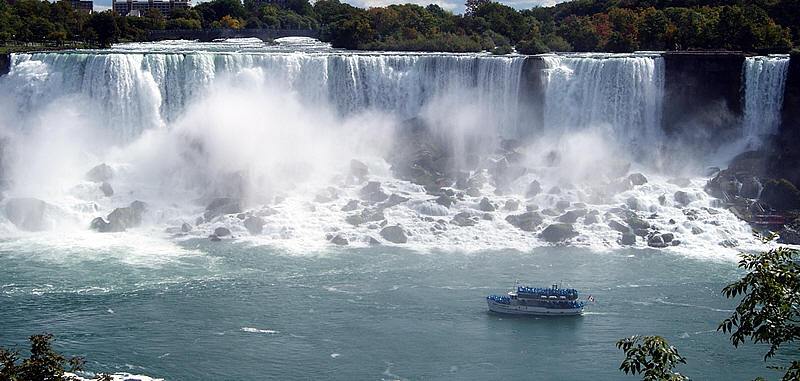Niagara Falls ‘earthquake’ of 1946 was actually a massive rock falling
Published February 6, 2023 at 2:36 pm

People on both sides of the Canadian-American border got a wake-up call today (Feb. 6) when a 4.2 magnitude earthquake rocked Buffalo, New York.
The shockwave, which hit at 6:15 am, was felt on the Canadian side from Fort Erie, Niagara Falls all the way to Hamilton.
However, this morning’s was a minor shiver that shook a handful of windows compared to what happened on March 26, 1946.
In the end, the 1946 version wasn’t even a earthquake but it hit so hard that people couldn’t be faulted into thinking it was.
At about 10:30 am on that day, a massive chunk of rock roughly 125 feet (38 meters) in length that was about 30 feet (9 meters) deep fell from the crest of the American Falls with such force that buildings on both sides of the Niagara Gorge were violently shaken.
Experts put the possible weight of the falling rock at 78,000 tons, which resulted such a colossal impact with the bottom of the American Falls that resident couldn’t tell if it was an explosion, an earthquake or some combination of both.
Police headquarters and newspapers on both sides of the Niagara Gorge were flooded with calls asking what had happened by the panicked populace.
A reporter at the New York newspaper, the Niagara Falls Gazette, ironically used Canadian imagery, describing the effect at their offices. “Our building shook like a maple leaf in a breeze,” he noted.
While the Canadian Horseshoe Falls had a relatively smooth edge, the American Falls have always had a craggy, jagged not-exactly-straight line edge, which made it difficult for even experts to see the exact part where the rock had plunged.
However, aerial photographs taken that afternoon showed a considerable change in the shape of the edge of the falls, proving that the original estimate of at least 125 feet in length and 30 feet deep as being most likely correct.
Unbelievably, the hydro power stations on both sides preceding the falls on the Niagara River saw no damage to their buildings though the staffers certainly heard and felt the rock crash. Equally surprising, while the local Hydro offices on both side felt the shock, there was no damage or interruption of service.
INsauga's Editorial Standards and Policies








